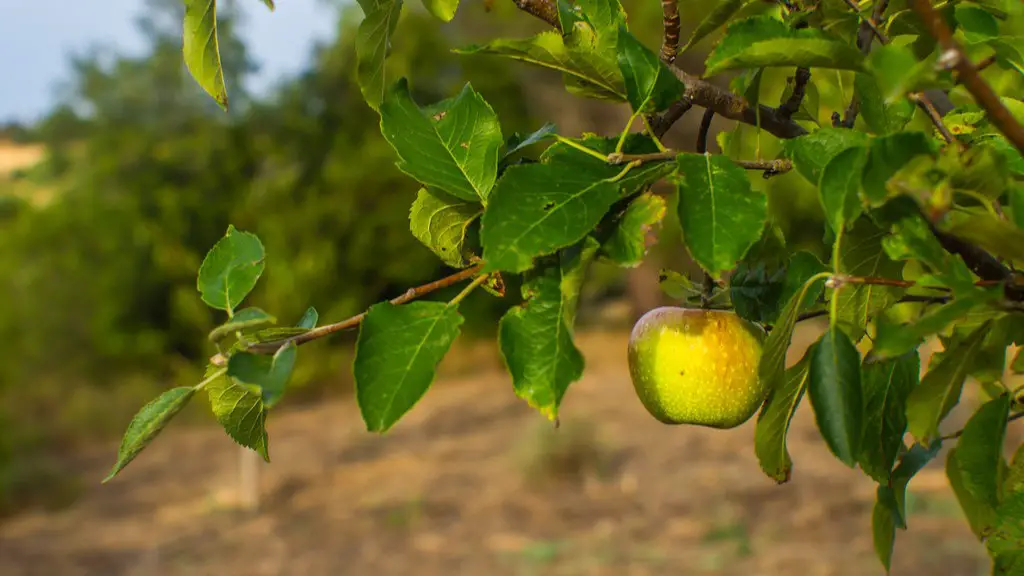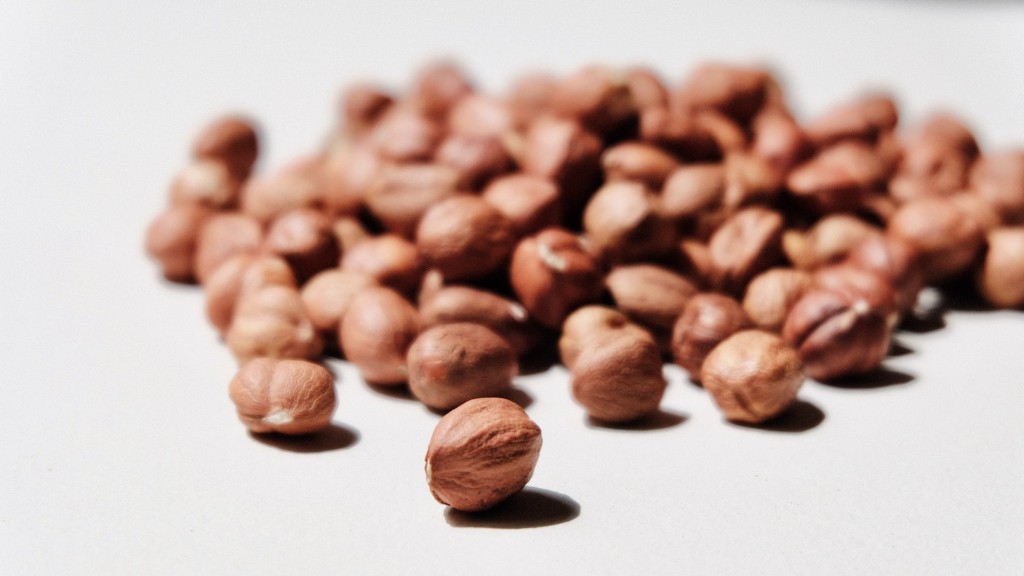Examining why apples may fall prematurely from trees is an important study for those in the horticultural field. Apple trees are grown for commercial or pleasure purposes, and the condition of the fruit plays a major role in the success of the harvest. It’s critical to understand why apples may fall off a tree before they’re ripe, and how to prevent it.
Early fruit drop may be caused by several environmental and cultural factors. Insufficient soil fertility, incorrect irrigation, improper pruning and heavy insect populations are all possible reasons why apples may fall early. Additionally, stress due to environmental conditions and improper balance of potash can also cause early fruit drop, while diseases like cedar-apple rust and the bacterial disease, Fireblight, can stunt the growth of apples, leading to early dropping.
Apples may fall for abnormal physiological reasons as well. Poor pollination is a common cause, as well as insufficient fertilization of the cells. Unripe apples may naturally drop to create room for healthy apples, as a process known as abscission.
Of course, it may not always be easy to pinpoint the exact cause of why apples are falling. An examination of the tree’s environment and cultural habits can help determine if any of those factors are at play. The process of analyzing the tree should begin with the tree’s general foundation. A soil test with results that can provide vital nutrients will help assess whether fertilizers and soil amendments should be used. Secondly, an evaluation of the tree’s pruning history should be performed- based on the targeted species as certain pruning and shaping helps promote canopy formation and fruiting.
The next step is to inspect the irrigation and drainage system of the tree. Improper drainage can lead to soil saturation and nutrient deficiencies. Moreover, during the growing season, irrigating can maintain soil moisture and aid in cell wall formation and the circulation of water and hormones, to enhance growth. Finally, the pest and disease pressure should be examined. Insects such as codling moth and oriental fruit moth, can damage the apples, or at least cause them to drop early. Diseases should also be identified, with the help of a qualified arborist or horticulturist.
Potential Nutrient Deficiencies
When apples are premature dropping, nutrient deficiencies might be to blame. A soil test should be conducted to identify any elements that may be lacking. Nitrogen, phosphorus and potassium all have an impact on the quality of the harvest and may lead to early dropping if the balance is not correct. Apple trees particularly require higher levels of potash, as this helps with the development of bigger and better quality of apples.
Low levels of vitamin B and magnesium can also be involved in the dropping of apples. Vitamin B promotes a healthy cellular function and can contribute to early dropping if not supplied in sufficient amounts. Magnesium plays an important role in photosynthesis and consequently, fruit production and quality. Leaf symptoms should be checked to identify any nutrient deficiencies.
Insufficient Pollination
Another potential cause of early fruit drop is poor pollination. Apple trees need cross pollination from other varieties in order to produce quality and abundant fruit. Without adequate pollination, apples may form but end up falling soon after. One way to verify if pollination is the culprit for early dropping is to examine the apples for pits. Pits or seeds inside the fruit usually indicate that flowers were pollinated, as well as that fertilization has taken place.
Improper Pruning Practices
Incorrect pruning practices are another possible cause of premature apple drop. Pruning should be done at the right time of year and in alignment with the target species’ growth pattern. For example, some apple trees require an open canopy with plenty of light and air to create larger blooms and promote pollination.
Over-Fertilization
On the other hand, over-fertilizing can also lead to early fruit drop. Apples trees require adequate amounts of nutrients, but too much fertilizer can trigger excessive vegetative growth, which takes away from the apple production. Applying too many nitrogen-rich fertilizers can cause extra leaf growth and lead to fruit being shed.
Heavy Insect Populations
Additionally, insect problems can cause fruit drop. Bug infestations can cause direct damage to the fruit itself, or increase stress, leading to early shedding. Insects such as codling moth, oriental fruit moth, apple maggot, etc. can cause direct injury to the apples, while others, such as aphids, can cause stress and lead to an early drop of the fruit.
Climate Stress
Stress due to environmental conditions is another factor that contributes to apple drop. Apple trees are particularly sensitive to temperature changes, as well as to dry and wet spells. Too much heat, for instance, can directly affect the quality of the fruit, leading to premature fruit dropping. The same goes for excessively wet or dry conditions.


